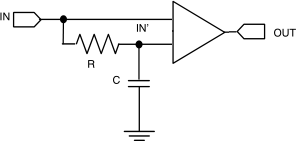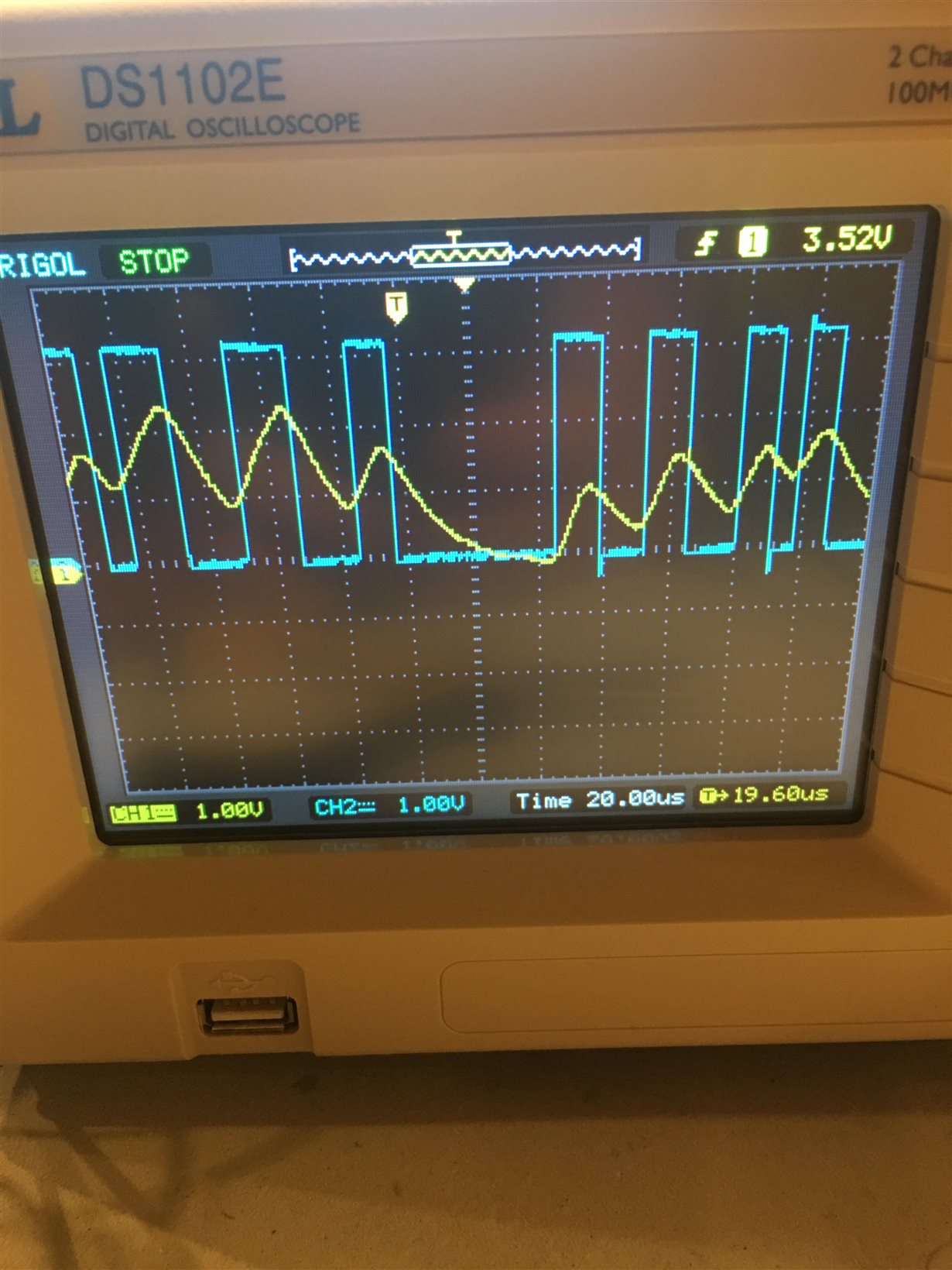Other Parts Discussed in Thread: LM324, LM397, TLV7031, TLV7011
Hello,
I have pasted an image of a digital signal from my oscilloscope below. The yellow is a digital signal that has been transmitted down a long transmission line and needs cleaned up. The blue is my attempt to run the yellow signal through the SN74HC14 Schmitt trigger to clean the signal up. You can see that a Schmitt trigger will not work for this type of signal since its based on a fixed threshold voltage. Some of the "peaks" of the signals are lower than the "valleys" of other signals because the signal itself is oscillating so a fixed voltage threshold method of cleaning the signal up will not work.
My next plan of attach is to use a differentiating op amp to measure the slope of the signal. I will then use the LM324 comparator to decide if the slope of the line should be HIGH or LOW. If the signal is positive from the differentiating op amp (above zero), the LM324 will output HIGH. If the signal is negative from the diff op amp, the LM324 will output LOW. It will act as a variable Schmitt trigger in a sense and won't care if the signal itself is 'wavy".
Before I order more parts, does this logic makes sense? Is there a TI semiconductor that can measure the slope of a signal and output HIGH or LOW based on the slope? Basically just checking if there is an easier way to do this before I go ahead with my plan, and not re-invent the wheel if there is an easier way. Thanks so much for the help.




